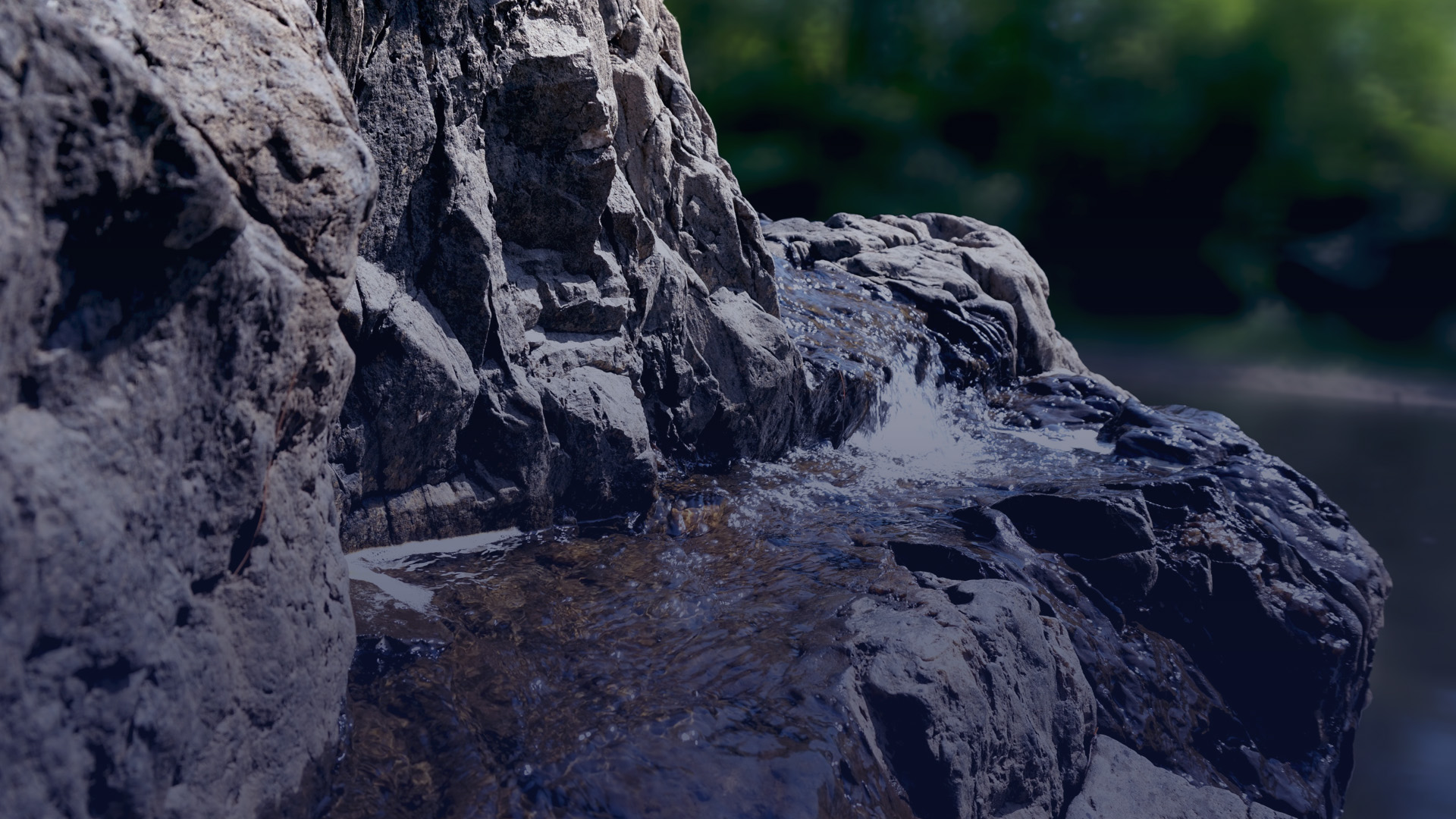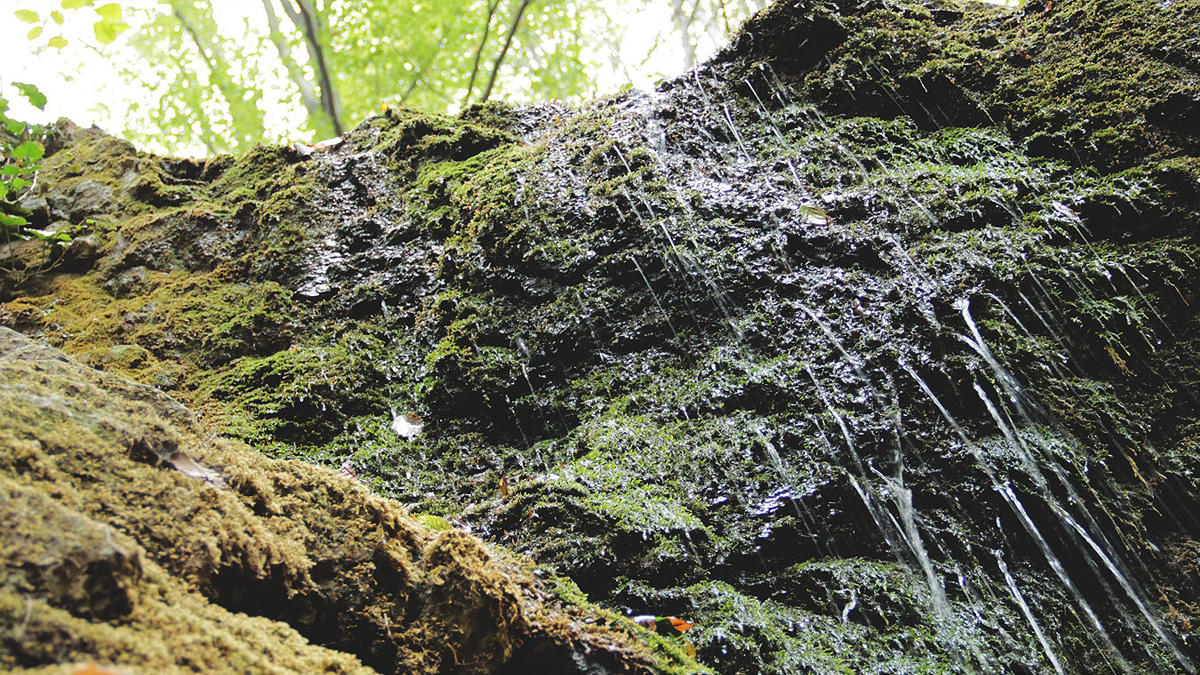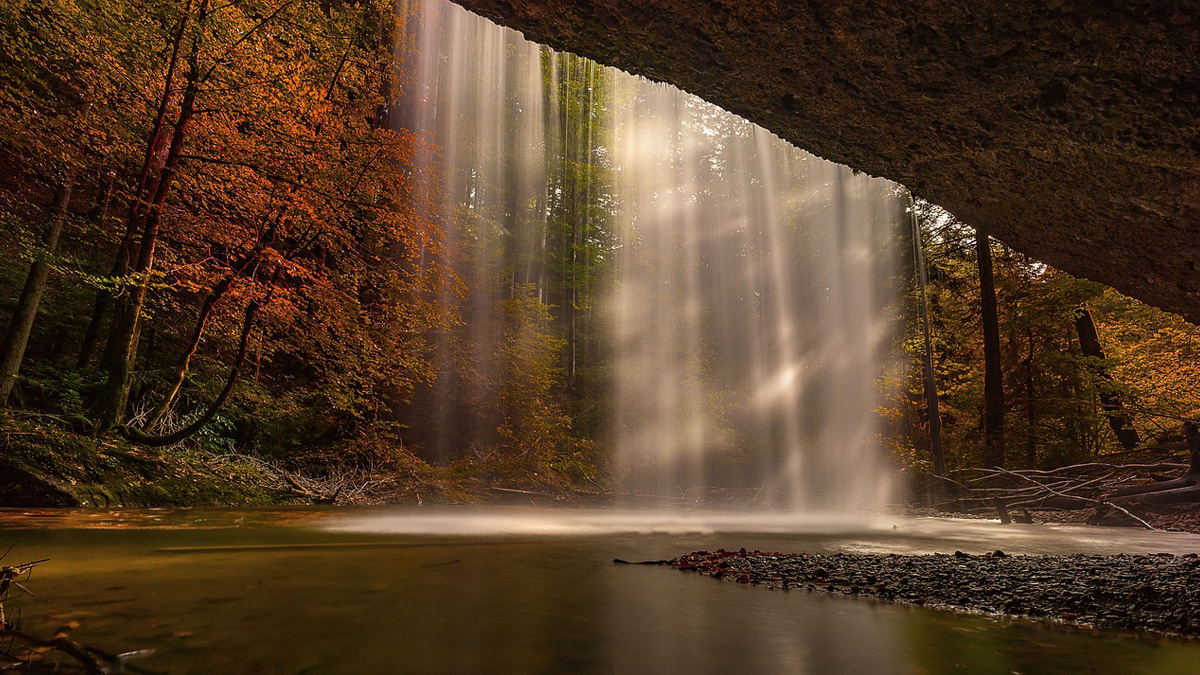
There are five waterfalls in Fruška Gora. They formed in places where streams break and create the longest free fall of water. They should not be compared to large waterfalls, as the height of the tallest one is about five meters. represent a kind of attraction on this small mountain.
It could be said that the distance from the Brankovac picnic area, Beočin and Rakovac Monasteries to Dumbovac Waterfall is equal in a straight line, so it can be reached from different directions if you follow the forest path and signs. Hidden from random passersby in a dense forest with about 5 meters of steepness, the Dumbovac stream briefly breaks and forms a waterfall. During dry periods and extreme heat, it does not dry up, but the water flow is significantly reduced. As everything in Fruška Gora is modest, so is this natural phenomenon. Reaching it presents a small challenge, especially the path from Brankovac. The road is dangerous and steep, so pay attention and prepare the right equipment.

Not long ago, hikers from "Železničar" realized how right the apostle of Vojvodina, Vasa Stajić, was when he wrote back in 1924 "... and you can spend years, in winter and summer, every free day on Fruška Gora, and you can't say that you know it all...". Led by uncle Aca Damjanović, their trademark, after almost a decade of searching for the Pannonian beauty, the "Železničar" group managed to correct the widespread belief that there is only one waterfall on Fruška Gora, the Dumbovac Waterfall. They discovered thirty-nine new ones and are not sure if that’s the end; a great surprise is that the tallest one, at fifteen meters, is located just 13 kilometers from the center of Novi Sad.

Hikers and lovers of the Pannonian beauty believe that one of the reasons for the long-standing misconception lies in the exceptional remoteness of these natural wonders. As if hiding their own beauty, they are far from the public, and there are no marked trails leading to them. Inaccessibility is the reason they remain unknown. The waterfalls of Fruška Gora are like grains of gold; they require a lot of effort to reach, they are small, and they provide pleasure only to those who strive to find them when they are at their most beautiful and richest in water.
A more significant question is where so many waterfalls come from on an exceptionally low elevation, which many from alpine regions would never even label a mountain. The answer lies in the long geological formation of the only mountain in Vojvodina, during which it underwent numerous geological phases and draws visible traces from each. In fact, each geological period has in some way marked Fruška Gora, leaving its imprint. Hence the great diversity in geomorphology, minerals, flora, and fauna.
The interweaving of streams is a result of tectonic disturbances during the transition to a new geological era. The interweaving is perhaps the most noticeable feature that makes this low and small mountain extremely challenging for hiking, although only eight peaks, covering less than a square kilometer, rise above 500 meters. Although the mountain is generally water-scarce, it has over 200 springs and more than 65 permanent streams in 43 valleys. Most of them are surprisingly steep for a low elevation.
Of the thirty-nine waterfalls, eight are located in the immediate vicinity of Crveni Čot, twenty-seven are on waterways directed towards the Danube, while twelve lead southward, but none reach the Sava; all disappear into porous soil. Given the diverse wealth, it is no surprise that there are various waterfalls between the Danube and Sava; most are erosive, but there are quite a few tectonic ones, in fault sections, accumulative in limestone and dolomite rocks. Most are cascades, although step-like formations are not rare. In terms of height and water volume, the local waterfalls are not comparable to those on the Zambezi, Mekong, or Niagara Rivers. They are usually between three and four meters high, with an exceptionally oscillating water flow. Only half of them flow into the Danube throughout the year. Even the largest dries up. Where is the largest Fruška Gora waterfall located and how tall is it? The answer is surprising: the largest waterfall, Veliki Kestenski, is also the closest to Novi Sad. Located just 13 kilometers from the city center, it stands 15 meters high. The trouble is that it dries up in the summer. Hardly anyone from a city of 450,000 people even knows that a small gem exists near the developing metropolis. In fact, it's hard to say that any Novi Sad resident has even heard of the Šandorovac stream in whose course the waterfall is located. It springs beneath the Rakovac quarry, at an altitude of 200 meters, is 3.7 kilometers long, and flows into the Danube between Novi Ledinci and Novi Rakovac.
The Veliki Kestenski is located on an unnamed stream tributary of the Šandorovac, at the site of Kišanj, below the Kesten elevation. Nearby is also the Mali Kestenski waterfall, whose height of ten meters is impressive by our standards. Both have two cascades, are not water-abundant, and both dry up in the summer. The valley where the stream is located is largely under military control, serving as a training ground for special units of the army, police, and state security services. Among the most attractive is the Koruški waterfall, located on the Almaški stream, one of the longer and more water-abundant ones, with a spring at an altitude of 295 meters and flowing into the Danube near Koruška at an altitude of 78 meters, meaning it has a drop of 217 meters. Just a kilometer from the confluence, it accepts the Medviš tributary, and a few dozen meters upstream is a waterfall that is 6.5 meters high. A canyon near Novi Sad. Immediately behind the waterfall, a real canyon forms, stretching about 600 meters. Its sides are completely vertical and carved into thick layers of clay. Among the more notable waterfalls in Fruška Gora are the Kozarski (7.5 meters), Šakotinački (6.5), and Lazin vir (5.2), but according to Novi Sad alpinists, the wildest and almost inaccessible are the waterfalls on the Ugljarski stream basin near Grabovo. A peculiarity of Fruška Gora is partially artificial waterfalls. These are former quarries and excavations in which natural streams have been cut off during decades of exploitation. In further exploitation, water is pumped out, but after work ends, water settles in the basins, creating small lakes. Often, a cut-off stream cascades down several tens of meters into new excavations, so, for example, the Southern waterfall in the Rakovac shooting range is as much as 30 meters high. However, it dries up in the summer. Even more interesting, and more attractive, is the Eastern waterfall on Lake Srebro near Ledinci. In fact, a very powerful Kamenarski stream, with a drop of as much as 50 meters per kilometer, has been interrupted by a quarry that partially filled with water about a decade ago. From the point of interruption of the Kamenarski stream to the lake level is 40 meters, so this semi-artificial waterfall is also the highest.
The newly discovered natural wealth of the region will only be of significance to the extent that the people of Novi Sad show the will to get to know it better. Especially as all the waterfalls are located in immediate vicinity of marked trails, and if they made a thematic trail, it would attract more visitors to Fruška Gora. Such a project is already in the making, and the Šandorovac waterfall could be the starting point of the hiking transversal that would be linked to all the water treasures of Fruška Gora.